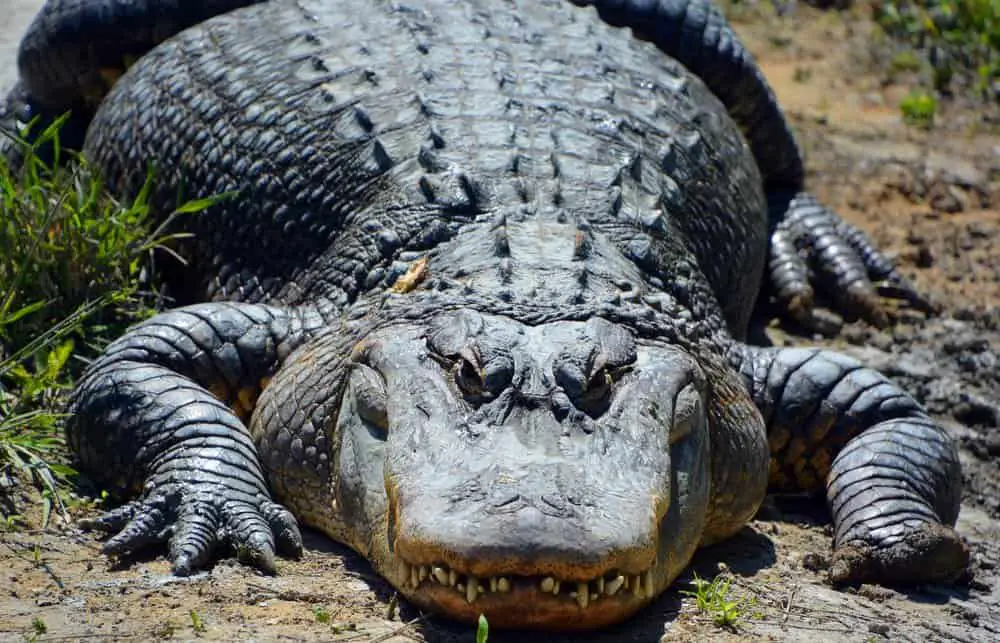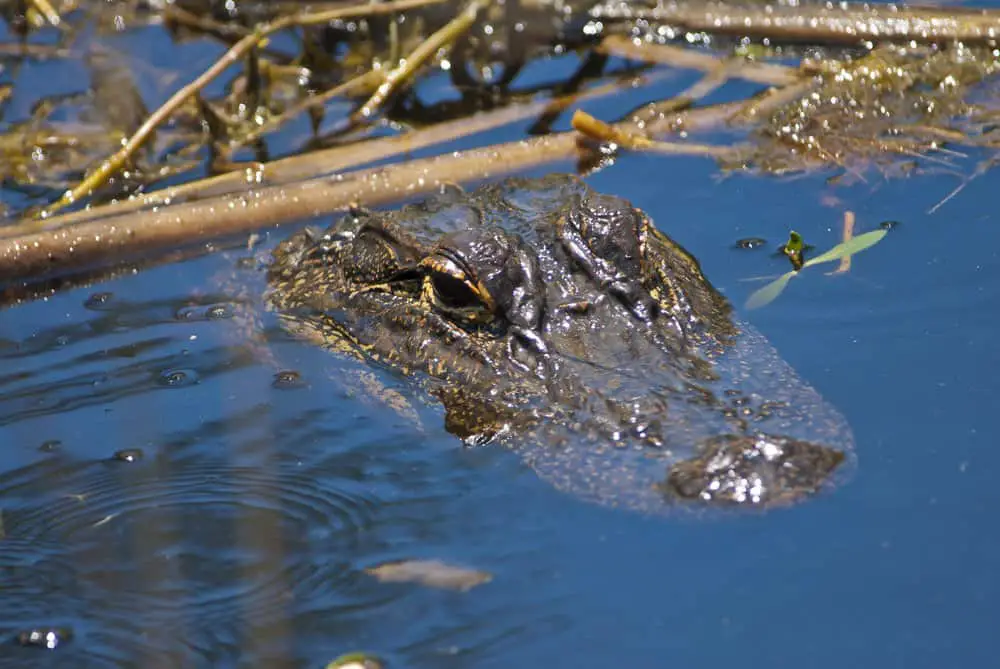What To Do If You See An Alligator While Hiking?

Ahh! An alligator! Something I never thought I would have to worry about – coming across an alligator while hiking, but here we are.
Ever since moving to Texas, I have been told by locals time and time again that alligators are everywhere in the state and that you need to be careful.
Alligators are most commonly found in bodies of water such as ponds, lakes, swamps, rivers, and creeks – which unfortunately are also places where people like to hike.
So, what should you do if you see an alligator while hiking?
Quick Links
Alligator Vs. Crocodile
The first thing you need to do is figure out if what you are looking at is, in fact, an alligator or a crocodile.
I know they look very similar, but there are some key differences.
First off, alligators are found in the southeastern United States, while crocodiles are found in tropical areas around the world.
The easiest way to tell them apart, however, is typically by the shape of their face. Alligators have a U-shaped snout, while crocodiles have a V-shaped snout. Alligators also tend to be a bit darker in color.
Are Alligators Dangerous?
The question on every hiker’s mind – are alligators dangerous?
The answer is yes and no. Alligators are apex predators, meaning they are at the top of the food chain and have no natural predators themselves.
They are also equipped with some pretty impressive weaponry. They have approximately 80 teeth in their mouths and can snap their jaws shut with tremendous force – up to 2,000 pounds per square inch.
Wondering how powerful that is?
Well, to put it into perspective, the average human jaw is roughly 150 pounds per square inch.
Their tails are also incredibly powerful and can be used to swat their prey or as a weapon while they are swimming.
But – compared to crocodiles, alligators are much less aggressive and typically only attack humans if they feel threatened. This is why I wanted to make the distinction above.
However, and this is a big however – alligators are still wild animals and should always be treated as such. In other words, don’t pet them.
They are fast, strong, and can do a lot of damage with one bite.
It is estimated that there are around 5 million alligators in the United States, primarily located in southeastern states like Florida and Louisana.
Over the past 70 years, there have been around 400 alligator attacks in the United States, with 15 of those being fatal.
While the odds of being attacked by an alligator are still pretty low, it is important to be aware of them and take precautions while hiking in areas where they are known to live.
What to Do If You See an Alligator While Hiking
The best thing you can do if you see an alligator while hiking is to just leave it alone.
They may look pretty darn scary, but the reality is that alligators are typically shy animals and will avoid contact with humans if they can. They are very similar to other wildlife you’ll encounter in that regard.
The last thing you want to do is make the alligator feel threatened, as that is when they are most likely to attack. A female alligator, specifically, may become aggressive if she feels like her nest is being threatened.
As I said, if you see an alligator while hiking, the best thing to do is to simply pay it no mind and continue your hike.
If you are unable to avoid the alligator, the next best thing to do is to make yourself as small as possible and back away slowly. As long as the alligator isn’t in full pursuit already, they won’t start chasing you all of a sudden for walking away.
When Are Alligators Most Active?
Alligators are most active at night and during the mating season, which runs from April to June, so it is important to be extra cautious during these times.
When hiking in alligator territory, it is also a good idea to avoid swimming or wading in waters where they may be present, as they are often attracted to splashing noises.
Alligator attacks are rare, but they do happen. The best way to avoid becoming a statistic is to simply use common sense and be aware of your surroundings when hiking in alligator territory.
Being informed and taking some simple precautions can help ensure that you have a safe and enjoyable hike.
How Do You Spot an Alligator in Water?

One of the best ways to spot an alligator in water is by looking for their eyes and nostrils which will often stick up above the surface.
Alligators are very good at camouflage, so they can be hard to spot if you’re not specifically looking for them.
Another thing to look out for is alligator tracks. If you see tracks leading into the water, there’s a good chance there’s an alligator nearby.
What To Do If An Alligator Starts Chasing You?
If the worst-case scenario does happen and an alligator starts chasing you, there are some things you can do to try and escape.
First off, do not panic. You only have a split second to make a decision, so it is important to remain calm and think clearly. And when it comes to being chased by an alligator, the best solution is to run in a straight line, as fast as you possibly can.
Alligators are fast, but they can only sustain their top speed for short bursts. Alligators can run up to 30 mph on land, but again, they tire out very quickly. Most experts also agree that you should be able to run away from an alligator if you need to.
If you’re in the lake, river, or any body of water, the best thing you can do is swim away as fast as you can to land, if possible.
Do not try to climb a tree, as alligators are excellent climbers and will likely be able to catch you.
When it comes to alligators, the traditional advice of “don’t run” does not apply here. Run.
What To Do If An Alligator Attacks?
If an alligator does attack, the best thing you can do is to fight back. Try to go for the eyes and ears as these are the most sensitive areas.
Punching the alligator in the nose is also a good idea as this will often make them release their grip. Kicking an alligator around its belly is not recommended as they have very tough skin, and it is unlikely to do much damage. They pretty much have human-impenetrable armor everywhere except for their eyes and ears.
Don’t try and pry open their jaws as this is almost impossible to do, and you will likely just end up losing a finger in the process.
If you have anything with you, such as a stick or pocket knife, try to use it to hit the alligator in the face.
The bottom line: You need to channel your inner Rocky Balboa and fight back with everything you’ve got if an alligator attacks.
Final Thoughts
Alligators are fascinating creatures, but it is important to remember that they are wild animals and should be treated with caution and respect.
If you’re hiking in alligator territory, be sure to take some basic precautions and be aware of your surroundings. And if you do find yourself being chased by an alligator, the best thing you can do is to run away as fast as you possibly can.







